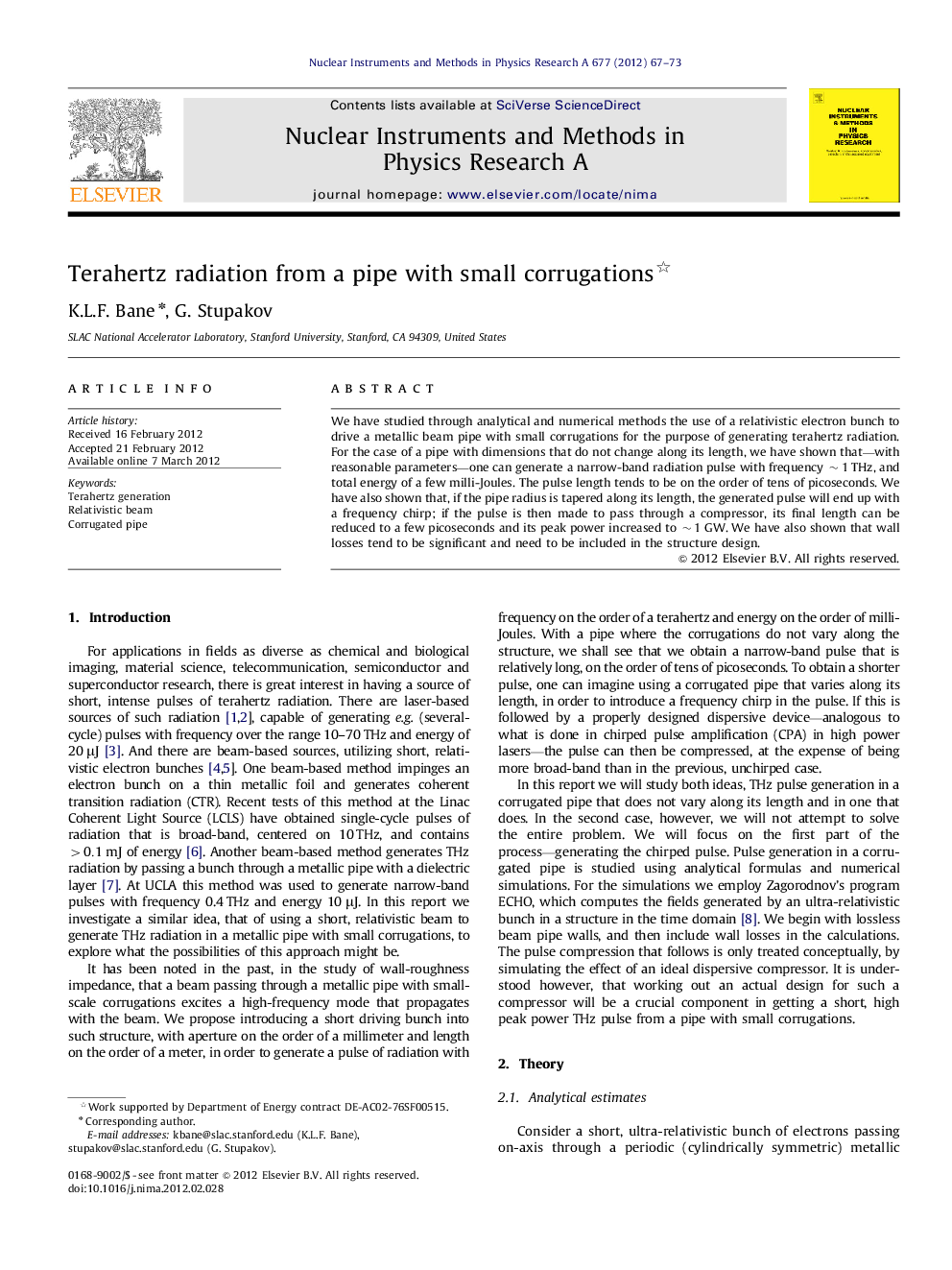| Article ID | Journal | Published Year | Pages | File Type |
|---|---|---|---|---|
| 1823761 | Nuclear Instruments and Methods in Physics Research Section A: Accelerators, Spectrometers, Detectors and Associated Equipment | 2012 | 7 Pages |
We have studied through analytical and numerical methods the use of a relativistic electron bunch to drive a metallic beam pipe with small corrugations for the purpose of generating terahertz radiation. For the case of a pipe with dimensions that do not change along its length, we have shown that—with reasonable parameters—one can generate a narrow-band radiation pulse with frequency ∼1THz, and total energy of a few milli-Joules. The pulse length tends to be on the order of tens of picoseconds. We have also shown that, if the pipe radius is tapered along its length, the generated pulse will end up with a frequency chirp; if the pulse is then made to pass through a compressor, its final length can be reduced to a few picoseconds and its peak power increased to ∼1GW. We have also shown that wall losses tend to be significant and need to be included in the structure design.
